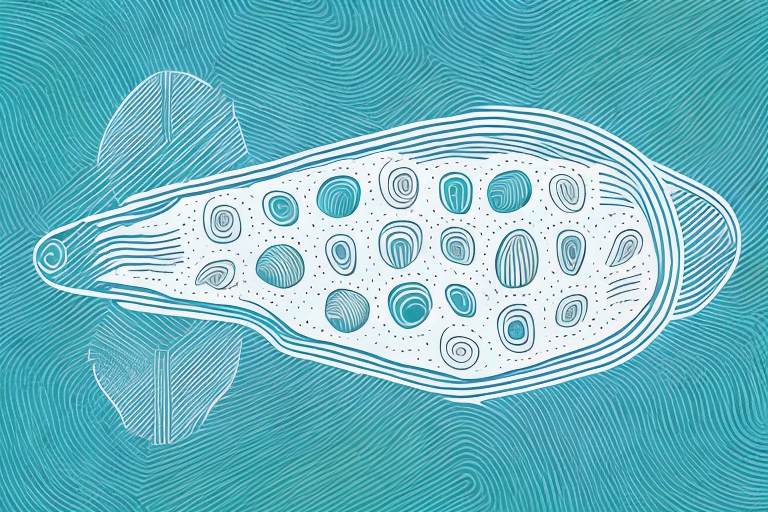Are you experiencing pain or discomfort in the ball of your foot? It’s possible that you have trigger points, which are tight knots of muscle that can cause pain and even limit your range of motion. Thankfully, there are many ways to alleviate this discomfort and prevent it from happening again in the future. In this article, we’ll explore the causes, symptoms, and treatments for trigger points in the ball of the foot, as well as tips for prevention.
Understanding the Anatomy of the Foot’s Ball and Trigger Points
Before we get into the causes of trigger points in the ball of the foot, it’s helpful to understand the anatomy of the foot. The ball of the foot refers to the area located between the toes and the arch of the foot, where the metatarsal bones meet the phalanges. These areas are prone to trigger points because they are heavily used when we walk, run, jump and even stand, which can cause the muscles to become tense and create knots. These knots can be painful when touched or pressed on, and can even refer pain to other parts of the foot or leg.
In addition to the ball of the foot, there are also trigger points located in the heel and arch of the foot. These trigger points can be caused by overuse, poor footwear, or even stress. When these trigger points are activated, they can cause pain and discomfort in the foot, as well as in other parts of the body, such as the lower back or hips. It’s important to take care of your feet and address any trigger points to prevent further pain and injury.
Common Causes of Sore Trigger Points in the Ball of Your Foot
There are several causes that can contribute to the formation of trigger points in the ball of your foot. One common cause is overuse, such as standing for long periods of time or participating in high-impact activities like running or jumping. Shoes that fit poorly or lack proper support can also cause trigger points to develop, as well as tight muscles in the legs or even stress on the body in general.
Another cause of sore trigger points in the ball of your foot is wearing high heels for extended periods of time. High heels can cause your weight to shift forward, putting extra pressure on the ball of your foot. This can lead to the development of trigger points and other foot problems. Additionally, certain medical conditions like plantar fasciitis or arthritis can also contribute to the formation of trigger points in the foot. It is important to take care of your feet and seek medical attention if you experience persistent foot pain or discomfort.
Symptoms and Signs of Trigger Point Pain in Your Foot
The most obvious symptom of trigger points in the ball of the foot is pain or discomfort when walking, running or standing. The pain is often described as a dull, achy sensation but can be sharp and severe in some cases. Trigger point pain is also often accompanied by muscle stiffness or a decreased range of motion in the foot. If you’re experiencing these symptoms, it’s important to address them before they become worse.
In addition to the above symptoms, trigger point pain in the foot can also cause numbness or tingling sensations in the toes or the sole of the foot. This can be a sign of nerve compression caused by the trigger point. It’s important to seek medical attention if you experience these symptoms, as untreated trigger points can lead to chronic pain and even muscle weakness.
Home Remedies for Relieving Sore Trigger Points in the Ball of Your Foot
If you have mild to moderate trigger point pain, there are several home remedies that you can try to alleviate your discomfort. One effective method is to apply ice to the affected area for 10-15 minutes at a time, which can help to reduce swelling and inflammation. You can also try stretching exercises like toe curls or calf stretches to help loosen tight muscles and relieve tension. Finally, consider using a foot roller or tennis ball to massage the bottom of your foot, which can help to decrease trigger point pain and improve blood flow.
In addition to these home remedies, it is important to wear comfortable and supportive shoes to prevent further aggravation of trigger points in the ball of your foot. Avoid high heels or shoes with narrow toe boxes, as they can put pressure on the affected area and worsen your symptoms. If your trigger point pain persists or becomes severe, it is recommended to seek medical attention from a healthcare professional.
The Benefits of Stretching Exercises for Relieving Trigger Point Pain in Your Foot
Stretching exercises can be particularly beneficial for relieving trigger point pain in the foot. These exercises help to elongate the muscles and reduce tension in the affected area. Calf stretches, toe curls, and Achilles tendon stretches are just a few examples of exercises that can help to alleviate trigger point pain in the ball of the foot. Stretching can also improve circulation to the area and promote healing.
Massage Therapy Techniques for Treating Sore Trigger Points in the Ball of Your Foot
If you have moderate to severe trigger point pain, you may benefit from visiting a massage therapist. Massage therapy can help to relax tight muscles and increase blood flow to the affected area, which can help to reduce pain and promote healing. Massage techniques like deep tissue massage, trigger point therapy, and myofascial release can all be effective for relieving trigger point pain in the ball of the foot.
Recommended Products and Tools for Managing Trigger Point Pain in Your Foot
There are several products and tools that can be helpful in managing trigger point pain in the ball of the foot. Foot rollers like the TheraBand Foot Roller or Ball are designed to roll along the bottom of your foot, and can help to alleviate inflammation and reduce trigger point pain. Another helpful tool is a foot massager, such as the HoMedics Shiatsu Foot Massager with Heat, which can help to soothe sore muscles and promote relaxation.
Tips for Preventing Future Soreness and Discomfort in the Ball of Your Foot
If you’ve experienced trigger point pain in the ball of your foot, there are several steps you can take to prevent it from happening again in the future. First, make sure to wear properly fitting shoes with good arch support. Stretching exercises can also help to prevent trigger points from forming. Finally, try to limit your time spent standing on hard surfaces, and take frequent breaks when necessary.
When to Seek Professional Help for Persistent or Severe Foot Pain
If you’re experiencing persistent or severe trigger point pain in the ball of your foot, it’s important to seek professional help. A doctor or physical therapist can evaluate your condition and provide a personalized treatment plan to alleviate your symptoms. Leaving trigger point pain untreated can lead to more serious problems, including limited mobility and chronic pain, so it’s important to seek help as soon as possible.
Overall, if you’re experiencing trigger point pain in the ball of your foot, there are several remedies and preventative measures you can take to alleviate your discomfort and prevent it from happening again in the future. If you’re unsure of where to start, it’s always a good idea to consult with your doctor or physical therapist for guidance.





